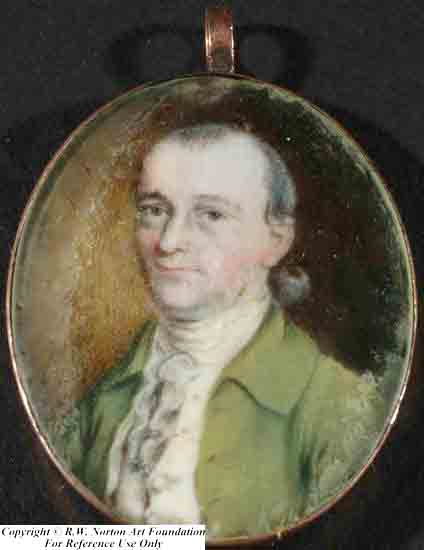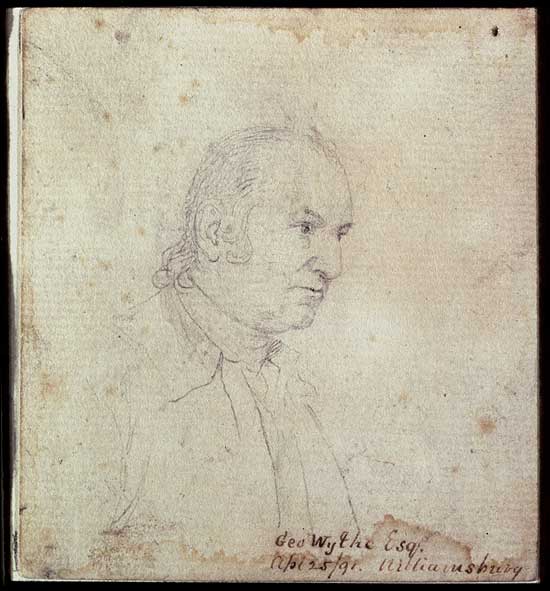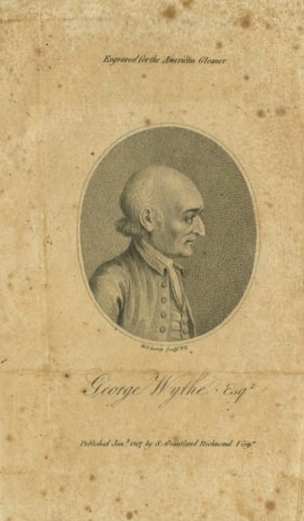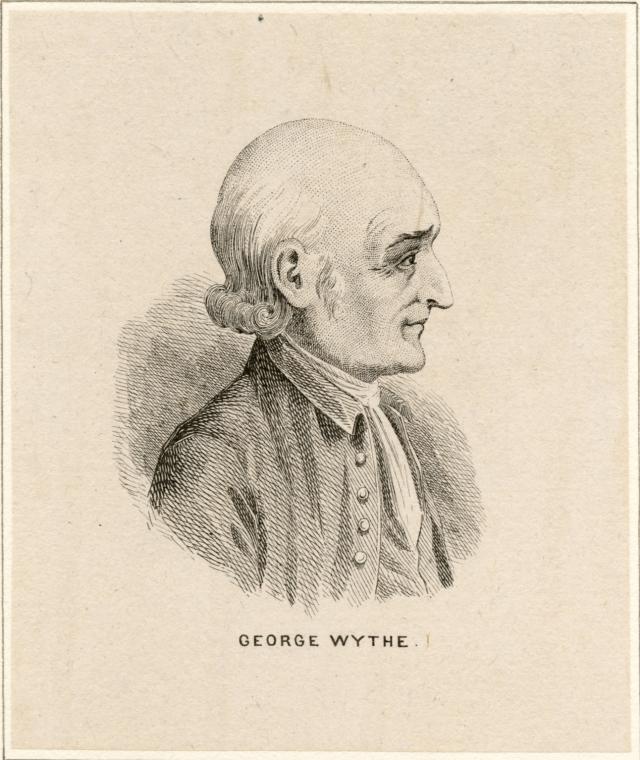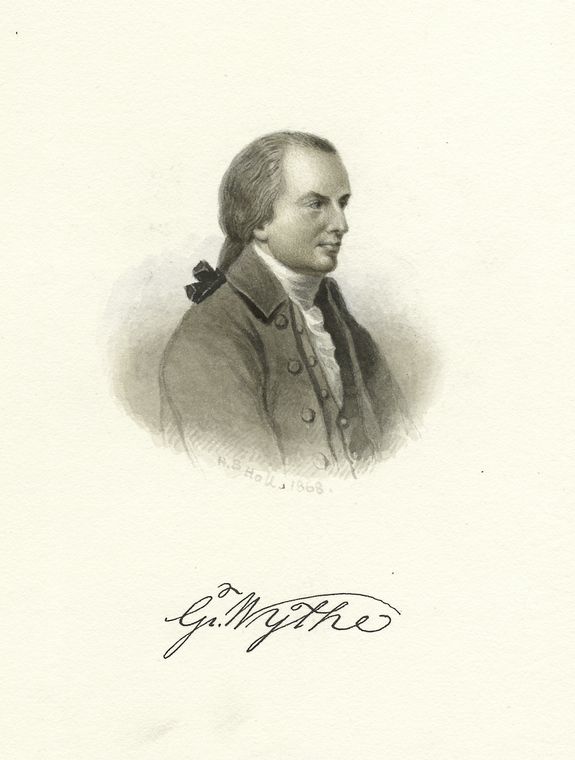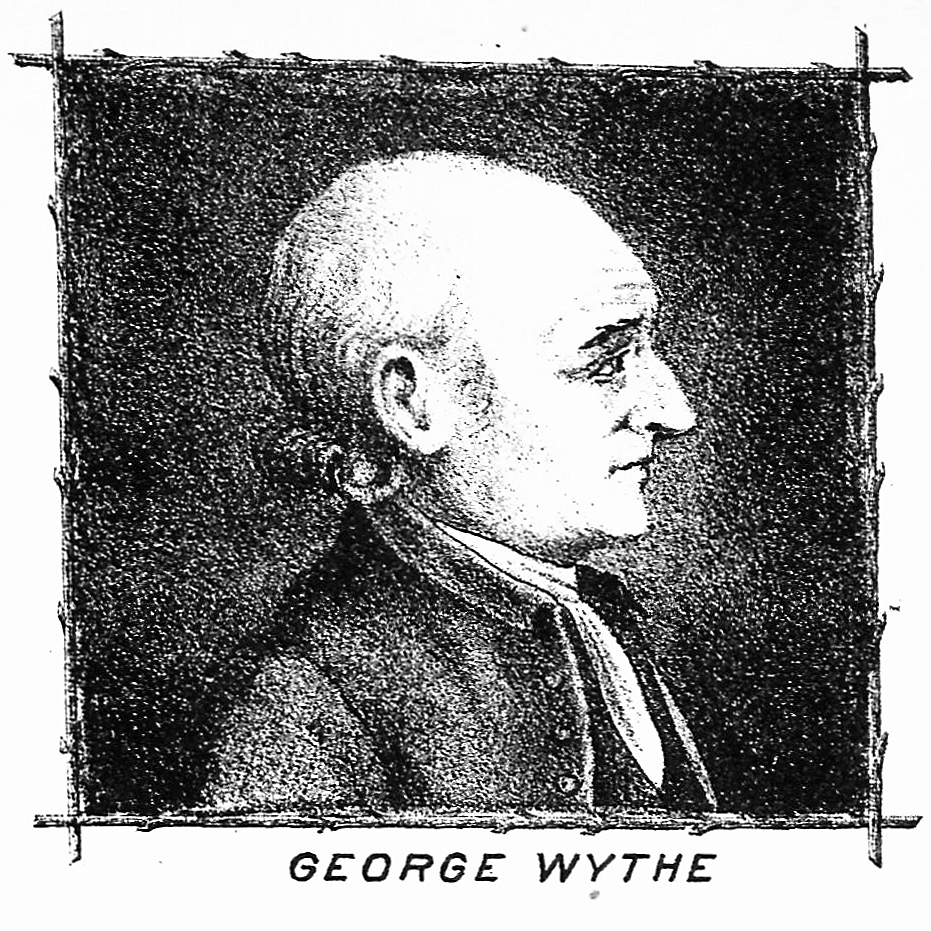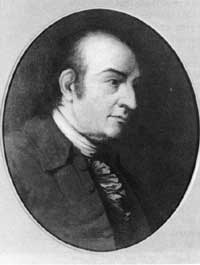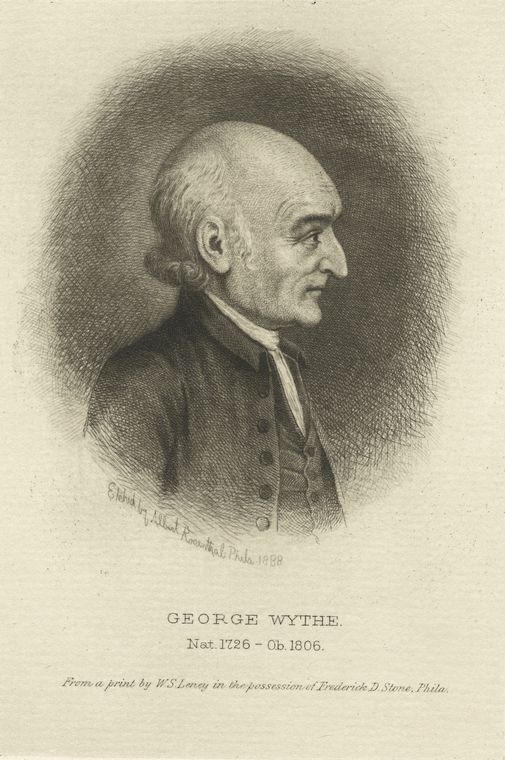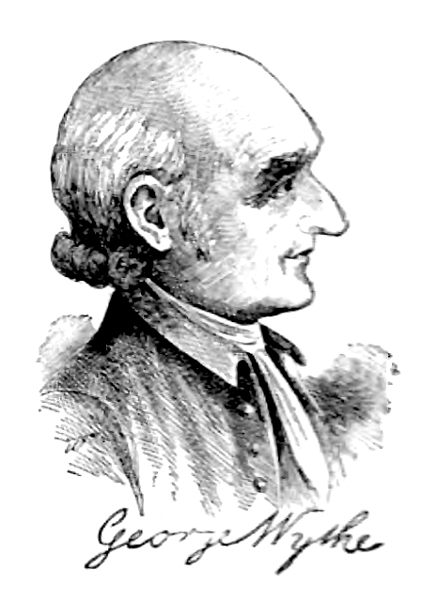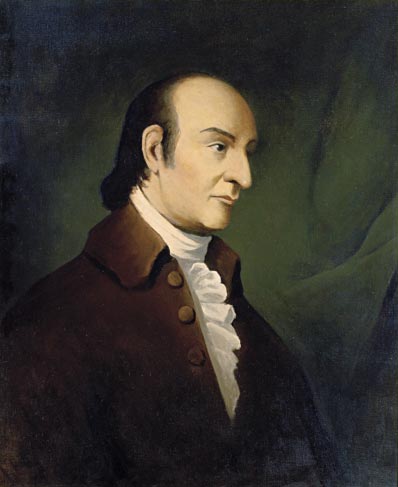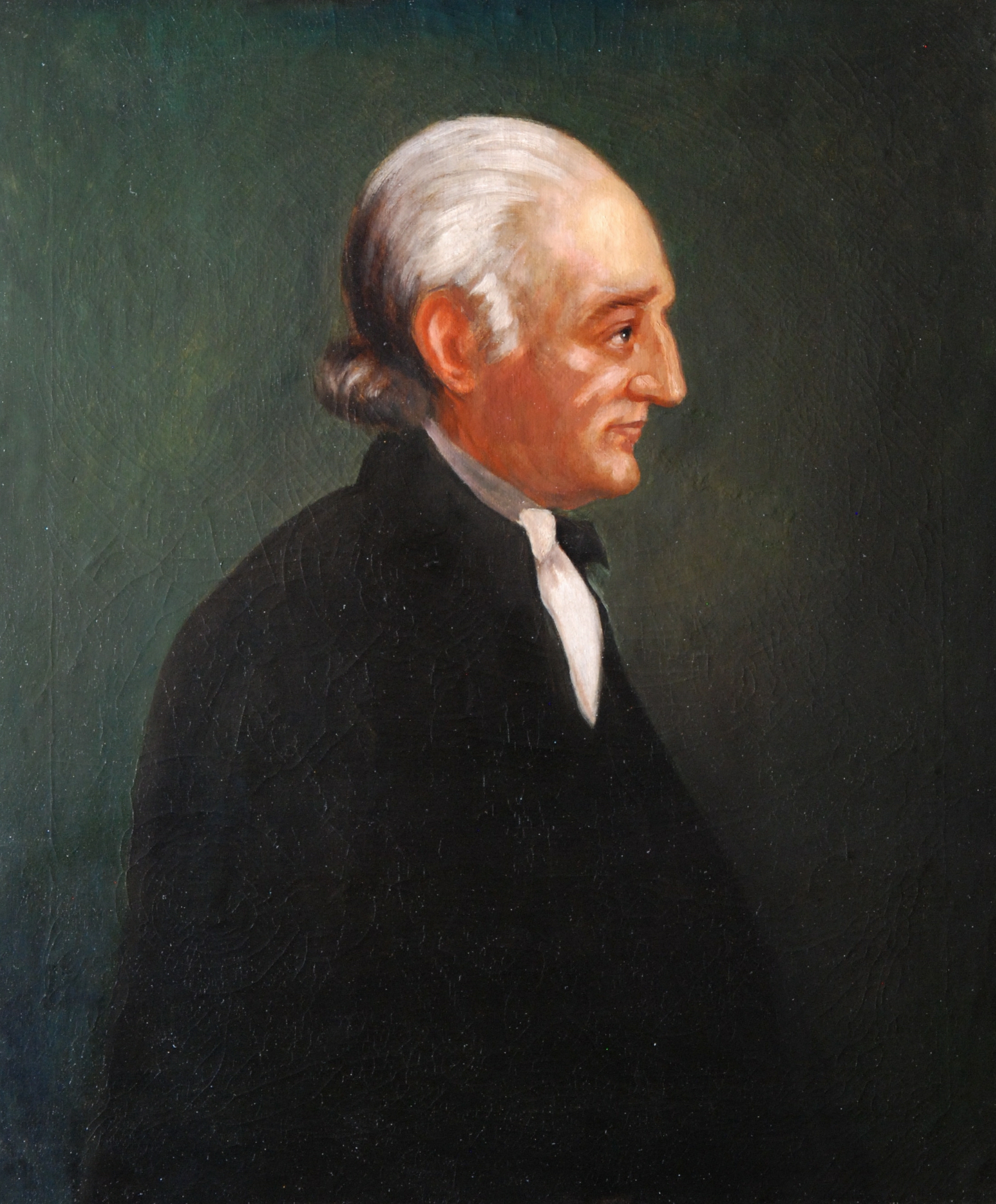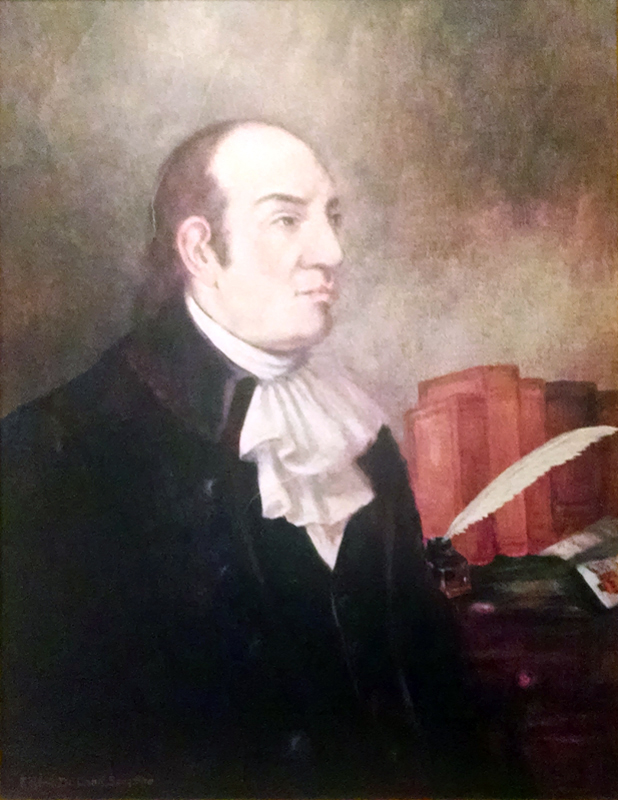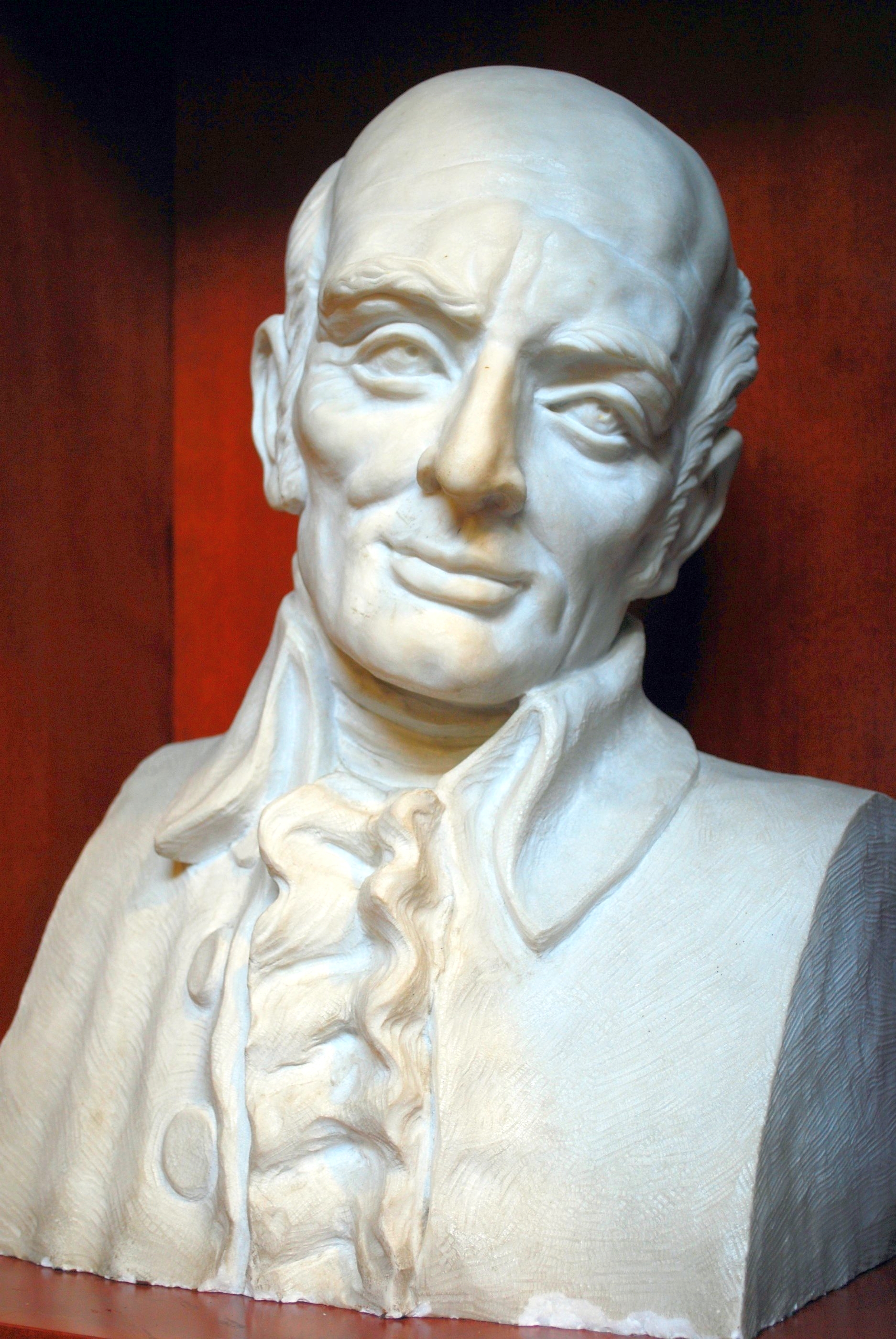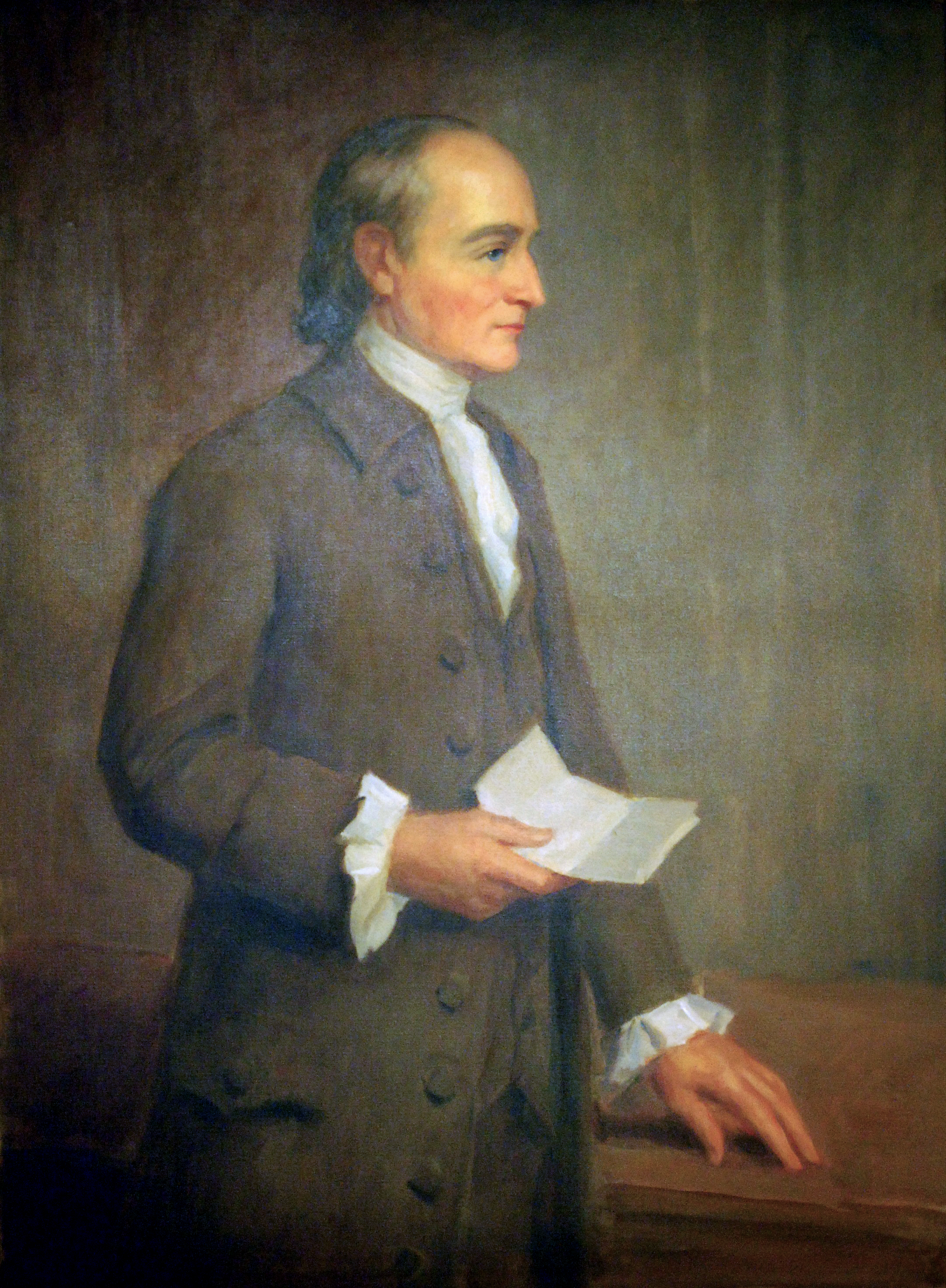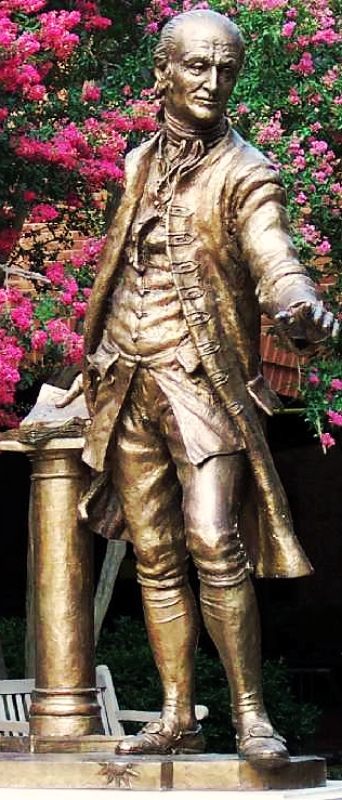Difference between revisions of "Depictions of Wythe"
| Line 1: | Line 1: | ||
<randomimage size="400" float="right" | <randomimage size="400" float="right" | ||
choices="SilvetteWythe1979.jpg|GeorgeWythePortrait.jpg|BacheSilhouette.jpg|BenbridgeWythe.jpg|Trumbull1791Wythe.jpg|GreatAmericanLawyers1907Wythe.jpg|Longacre1823Wythe.jpg|Rosenthal1888Wythe.jpg|Erekson1876Wythe.jpg|Crossman1927Wythe.jpg|Leney1807Wythe.jpg" /> | choices="SilvetteWythe1979.jpg|GeorgeWythePortrait.jpg|BacheSilhouette.jpg|BenbridgeWythe.jpg|Trumbull1791Wythe.jpg|GreatAmericanLawyers1907Wythe.jpg|Longacre1823Wythe.jpg|Rosenthal1888Wythe.jpg|Erekson1876Wythe.jpg|Crossman1927Wythe.jpg|Leney1807Wythe.jpg" /> | ||
| − | In an 1806 | + | In an 1806 [[Jefferson-Peale Correspondence|letter to the painter, Charles Willson Peale]] (1741 – 1827), [[Thomas Jefferson]] laments that he only has a "shade in profile" remaining of his friend and mentor, [[George Wythe]], "whose portrait was never taken."<ref>[http://hdl.loc.gov/loc.mss/mtj.mtjbib016602 Jefferson to Charles Willson Peale, 22 November 1806], ''The Thomas Jefferson Papers,'' Series 1, General Correspondence, 1651-1827, Library of Congress.</ref> Jefferson sent Peale a copy of the profile, from which a portrait was made by "filling the out line of your late friend Judge Wythe. Whether you may find it equally striking as to likeness I cannot say, for my remembrance has not furnished me with any Idea's of the form of his features, therefore it is all guess work."<ref>[http://hdl.loc.gov/loc.mss/mtj.mtjbib016670 Charles Willson Peale to Jefferson, 13 December 1806], ''The Thomas Jefferson Papers,'' Series 1, General Correspondence, 1651-1827, Library of Congress.</ref> The current location of Peale's portrait of Wythe is unknown, and it was probably dispersed with Jefferson's estate after his death. |
Despite what Jefferson tells us, there is a portrait identified as Wythe—in minature—in the collection of the [http://www.rwnaf.org/collections/item?id=1617 R.W. Norton Art Gallery,] in Shreveport, Louisiana, attributed to [[wikipedia:Henry Benbridge|Henry Benbridge]] (1743 – 1812). A watercolor on ivory, 1½ inches tall × 1¼ wide, the miniature depicts Wythe as a young man. A 1971 text on Benbridge published by the Smithsonian Institution's [http://www.npg.si.edu/ National Portrait Gallery] observes, however: "Since the history of this portrait does not go back beyond 1941, it is suspect. The technique is not characteristically Benbridge."<ref>Robert G. Stewart, ''Henry Benbridge (1743-1812): American Portrait Painter,'' (Washington, D.C.: Smithsonian Institution Press, 1971), 81.</ref> This statement does not necessarily mean the miniature is not an authentic portrait of Wythe, however. | Despite what Jefferson tells us, there is a portrait identified as Wythe—in minature—in the collection of the [http://www.rwnaf.org/collections/item?id=1617 R.W. Norton Art Gallery,] in Shreveport, Louisiana, attributed to [[wikipedia:Henry Benbridge|Henry Benbridge]] (1743 – 1812). A watercolor on ivory, 1½ inches tall × 1¼ wide, the miniature depicts Wythe as a young man. A 1971 text on Benbridge published by the Smithsonian Institution's [http://www.npg.si.edu/ National Portrait Gallery] observes, however: "Since the history of this portrait does not go back beyond 1941, it is suspect. The technique is not characteristically Benbridge."<ref>Robert G. Stewart, ''Henry Benbridge (1743-1812): American Portrait Painter,'' (Washington, D.C.: Smithsonian Institution Press, 1971), 81.</ref> This statement does not necessarily mean the miniature is not an authentic portrait of Wythe, however. | ||
Revision as of 15:39, 4 April 2014
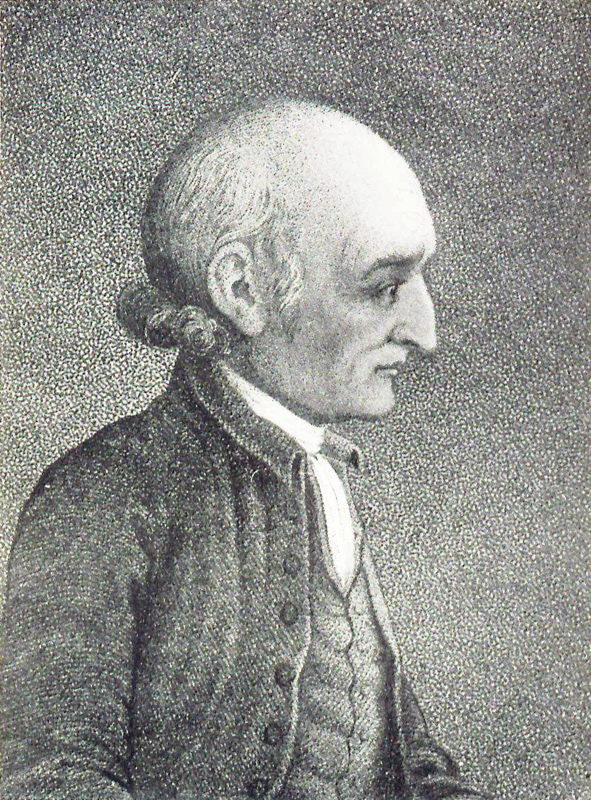
In an 1806 letter to the painter, Charles Willson Peale (1741 – 1827), Thomas Jefferson laments that he only has a "shade in profile" remaining of his friend and mentor, George Wythe, "whose portrait was never taken."[1] Jefferson sent Peale a copy of the profile, from which a portrait was made by "filling the out line of your late friend Judge Wythe. Whether you may find it equally striking as to likeness I cannot say, for my remembrance has not furnished me with any Idea's of the form of his features, therefore it is all guess work."[2] The current location of Peale's portrait of Wythe is unknown, and it was probably dispersed with Jefferson's estate after his death.
Despite what Jefferson tells us, there is a portrait identified as Wythe—in minature—in the collection of the R.W. Norton Art Gallery, in Shreveport, Louisiana, attributed to Henry Benbridge (1743 – 1812). A watercolor on ivory, 1½ inches tall × 1¼ wide, the miniature depicts Wythe as a young man. A 1971 text on Benbridge published by the Smithsonian Institution's National Portrait Gallery observes, however: "Since the history of this portrait does not go back beyond 1941, it is suspect. The technique is not characteristically Benbridge."[3] This statement does not necessarily mean the miniature is not an authentic portrait of Wythe, however.
Silhouettes were a popular form of portraiture in the eighteenth- and nineteenth-centuries. Wythe's profile in shadow (or "shade," as Jefferson describes it) was taken at least twice. William DuVal describes two silhouettes in a letter to Thomas Jefferson in December, 1806, after Wythe's death: "The profile you have, will shew his appearance at that period of his Life, and the one I have, will exhibit a strong likeness a few years before his untimely Death."[4] The later profile, taken in 1804 by William Bache (1771 – 1845) is described by Jefferson as being "6 or 8 [inches in] length";[5] while the earlier profile is said by DuVal to be "in miniature."[6] Only a copy of the Bache silhouette has survived to the present day, and appears in an album of Bache's work in the collections of the National Portrait Gallery.
In addition to Bache's silhouette, there is a sketch by John Trumbull taken from life in 1791, for his large (18 feet × 12 feet) painting of the Declaration of Independence, which is in the United States Capitol rotunda, in Washington, D.C. Trumbull spent more than thirty years obtaining sketches of as many living signers of the Declaration he could find, and made several versions before the final painting was unveiled in 1818. In addition to the official painting, there is a smaller (38 × 21 inches) study at the Yale University Art Gallery in New Haven, Connecticut, and another version (108 × 72 inches), completed by Trumbull in 1832, at the Wadsworth Atheneum, in Hartford. In all three paintings, Wythe appears at the far left edge of the scene.
Images of George Wythe
Miniature, attributed to Henry Benbridge (c. 1770). Original at the R.W. Norton Art Gallery, Shreveport, Louisiana.
Pencil sketch from life, by John Trumbull, in Williamsburg (1791). Image courtesy of the Colonial Williamsburg Foundation.
William Bache silhouette (1804). From Shades of Our Ancestors, by Alice Van Leer Carrick (1928).
William Satchwell Leney etching (1807). Original at the Virginia Historical Society.
Detail from John Trumbull's painting, Declaration of Independence (1818). Original at the U.S. Capitol, Washington, D.C.
J.B. Longacre etching (1823), after Leney. From John Sanderson's Biography of the Signers to the Declaration of Independence (vol. 2).
Lossing illustration (1859). Image courtesy of the New York Public Library.
William Bryan Hall (1868). Image courtesy of the New York Public Library.
Brotherhead illustration (1872). From The Centennial Book of the Signers.
John Ferguson Weir painting (1876), after John Trumbull. Image from History of the Portrait Collection, Independence National Historical Park, (2001). Original at Independence National Historical Park, Philadelphia.
Erekson lithograph (1876). Original at the Library of Congress.
Rosenthal, after Leney (1888). Image courtesy of the New York Public Library.
From the National Cyclopædia of American Biography (1893).
Portrait by William H. Crossman (1927), after John Trumbull. Original with the Colonial Williamsburg Foundation, Williamsburg, Virginia.
Portrait by Eugenie DeLand Saugstad (1939), after Weir. Original with the Virginia Historical Society collections, currently on display at the Hampton History Museum, Hampton, Virginia.
Marble bust by Felix de Weldon (1954), College of William & Mary Law School.
Marble bust by Bryant Baker (1962). Original at the Virginia State Capitol, Library of Virginia art collection, Richmond, Virginia.
See also
References
- ↑ Jefferson to Charles Willson Peale, 22 November 1806, The Thomas Jefferson Papers, Series 1, General Correspondence, 1651-1827, Library of Congress.
- ↑ Charles Willson Peale to Jefferson, 13 December 1806, The Thomas Jefferson Papers, Series 1, General Correspondence, 1651-1827, Library of Congress.
- ↑ Robert G. Stewart, Henry Benbridge (1743-1812): American Portrait Painter, (Washington, D.C.: Smithsonian Institution Press, 1971), 81.
- ↑ William DuVal to Jefferson, 21 November 1806, The Thomas Jefferson Papers, Series 1, General Correspondence, 1651-1827, Library of Congress.
- ↑ Jefferson to Peale, 22 November 1806.
- ↑ William DuVal to Jefferson, 12 July 1806, The Thomas Jefferson Papers, Series 1, General Correspondence, 1651-1827, Library of Congress.
